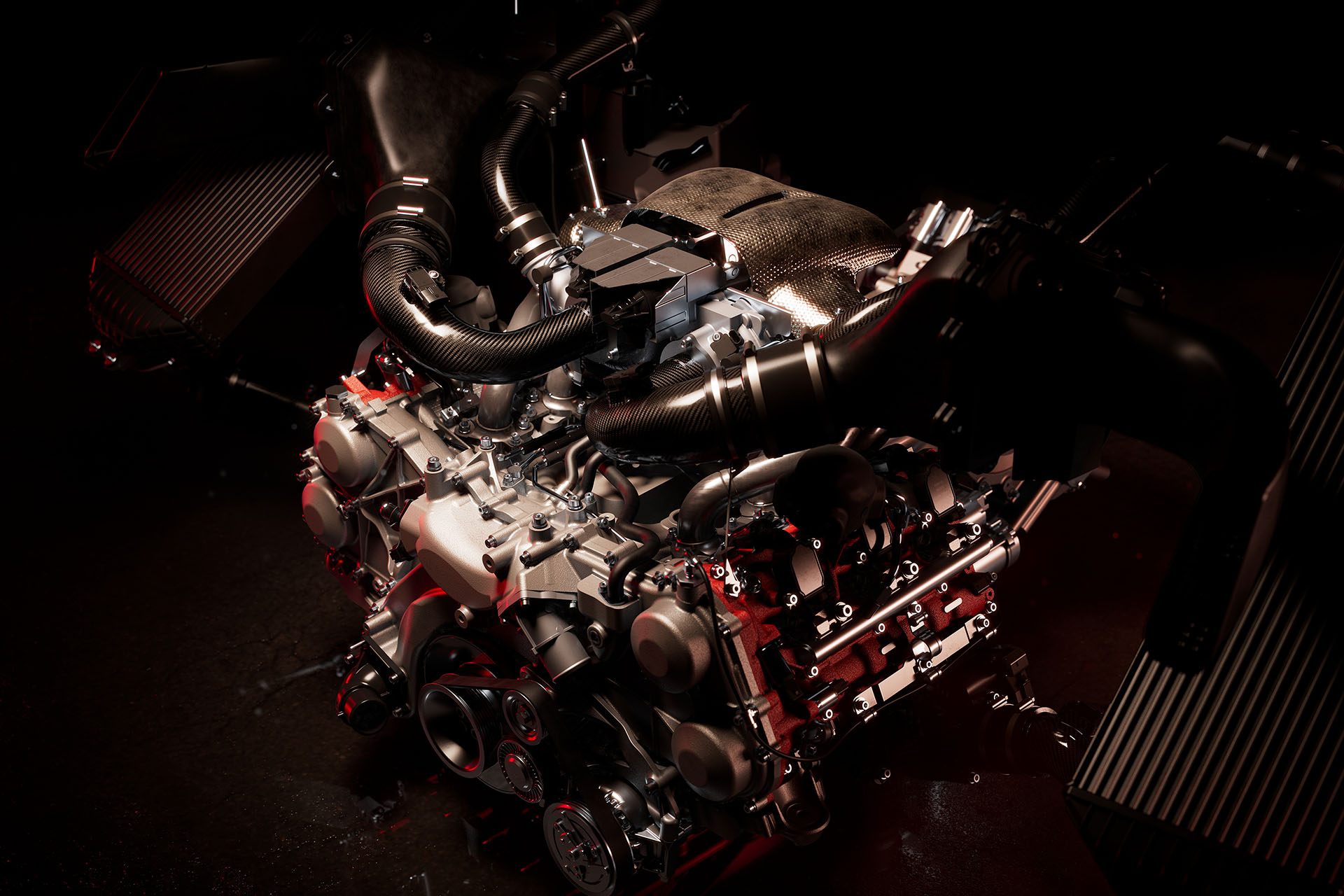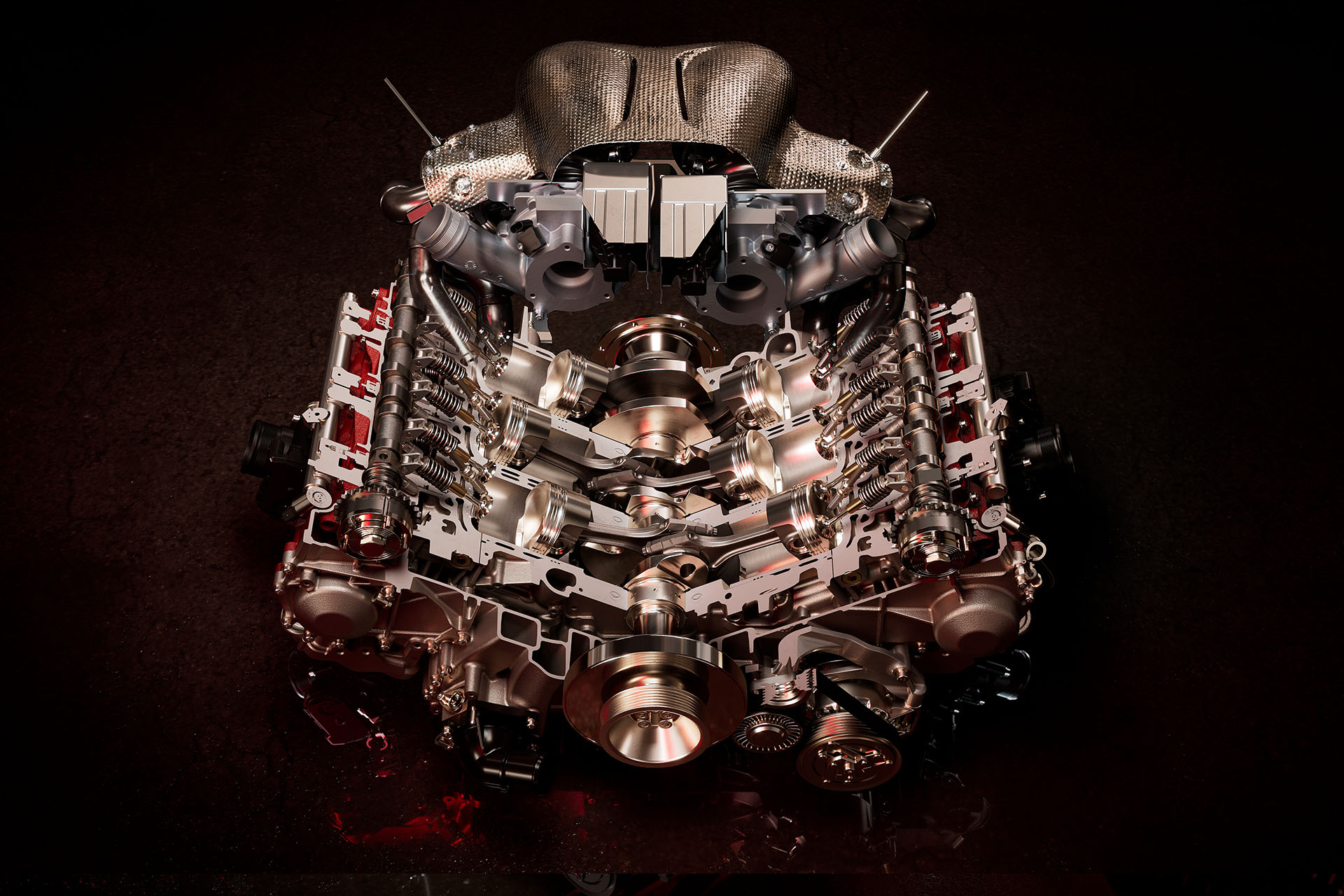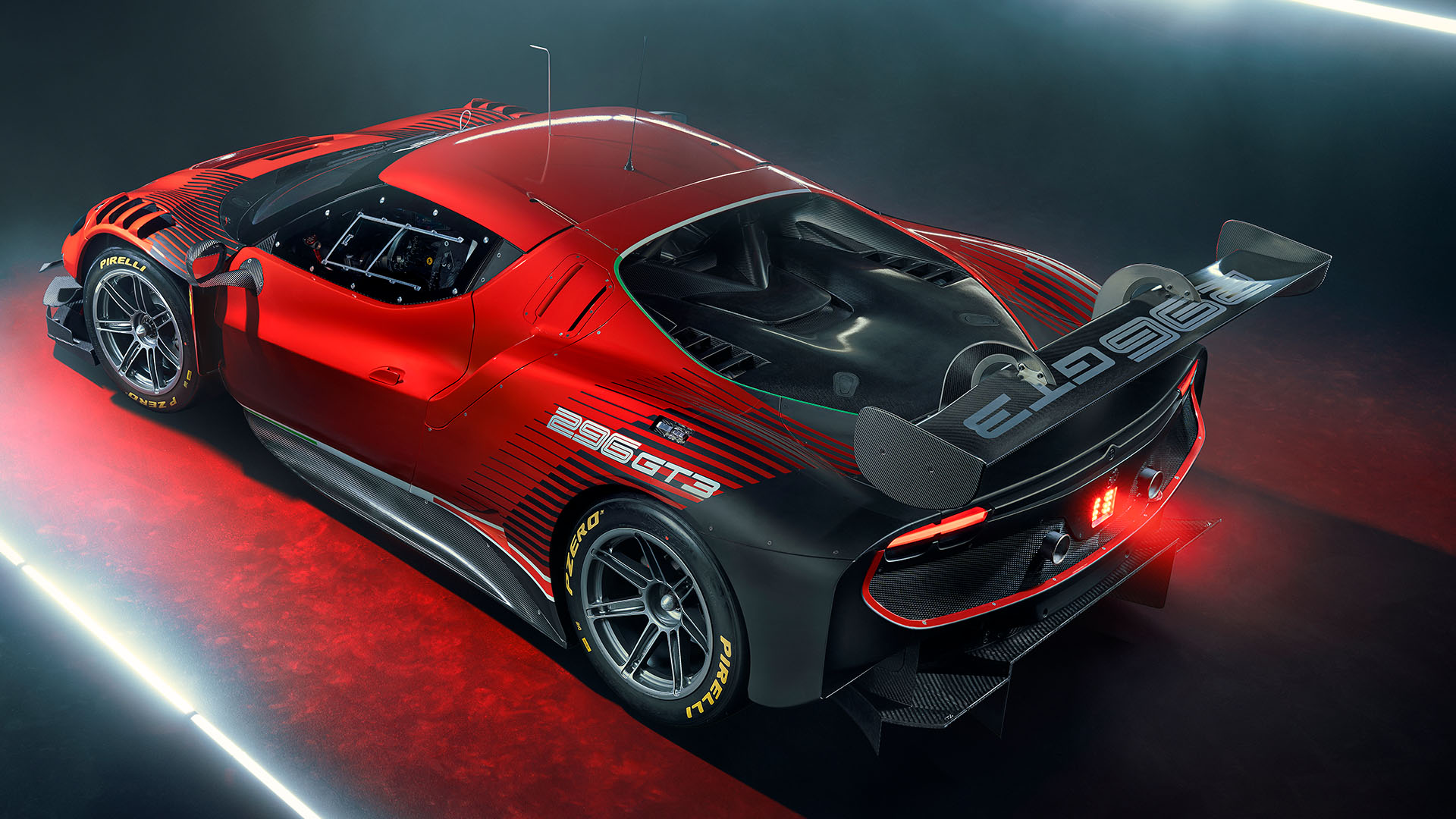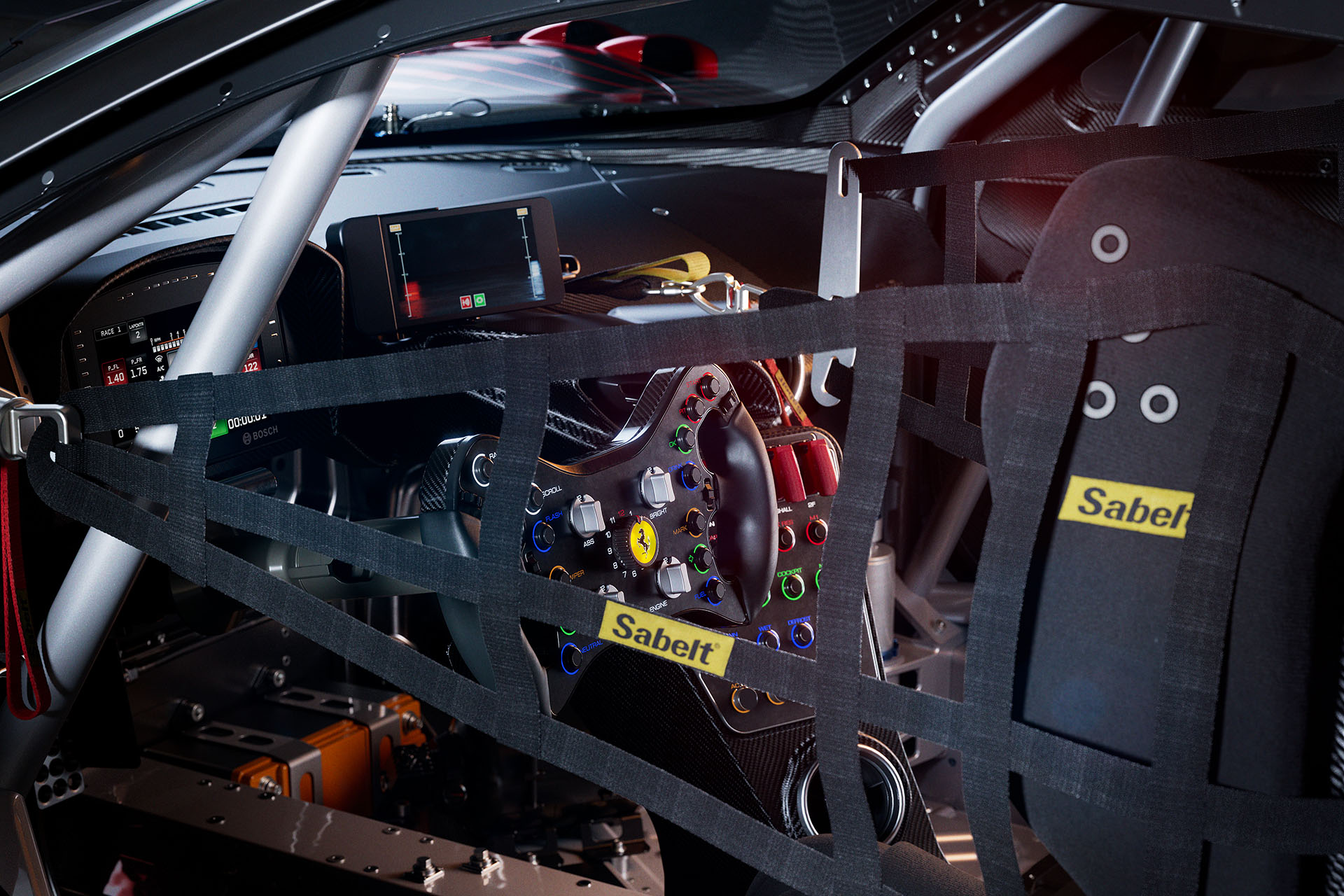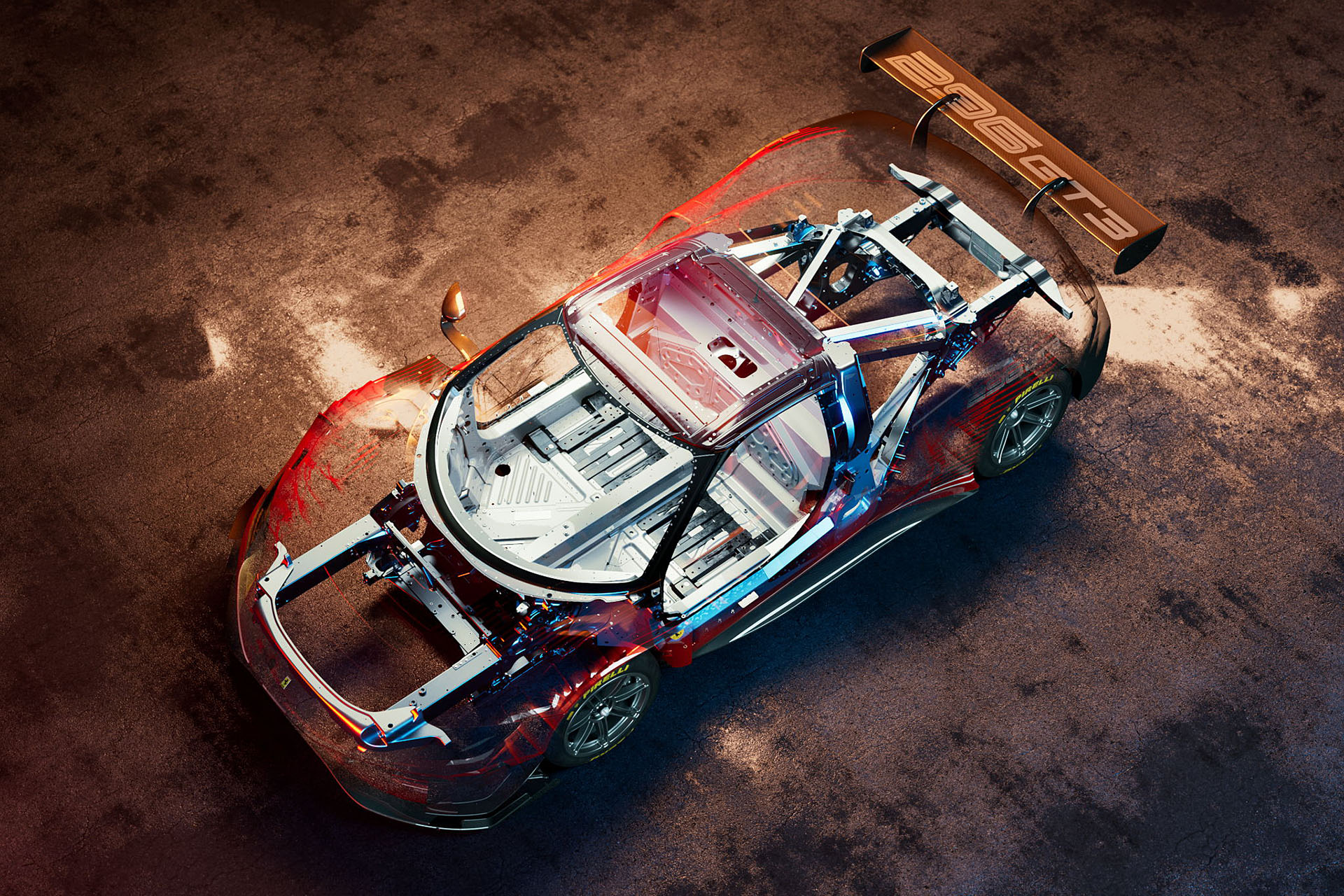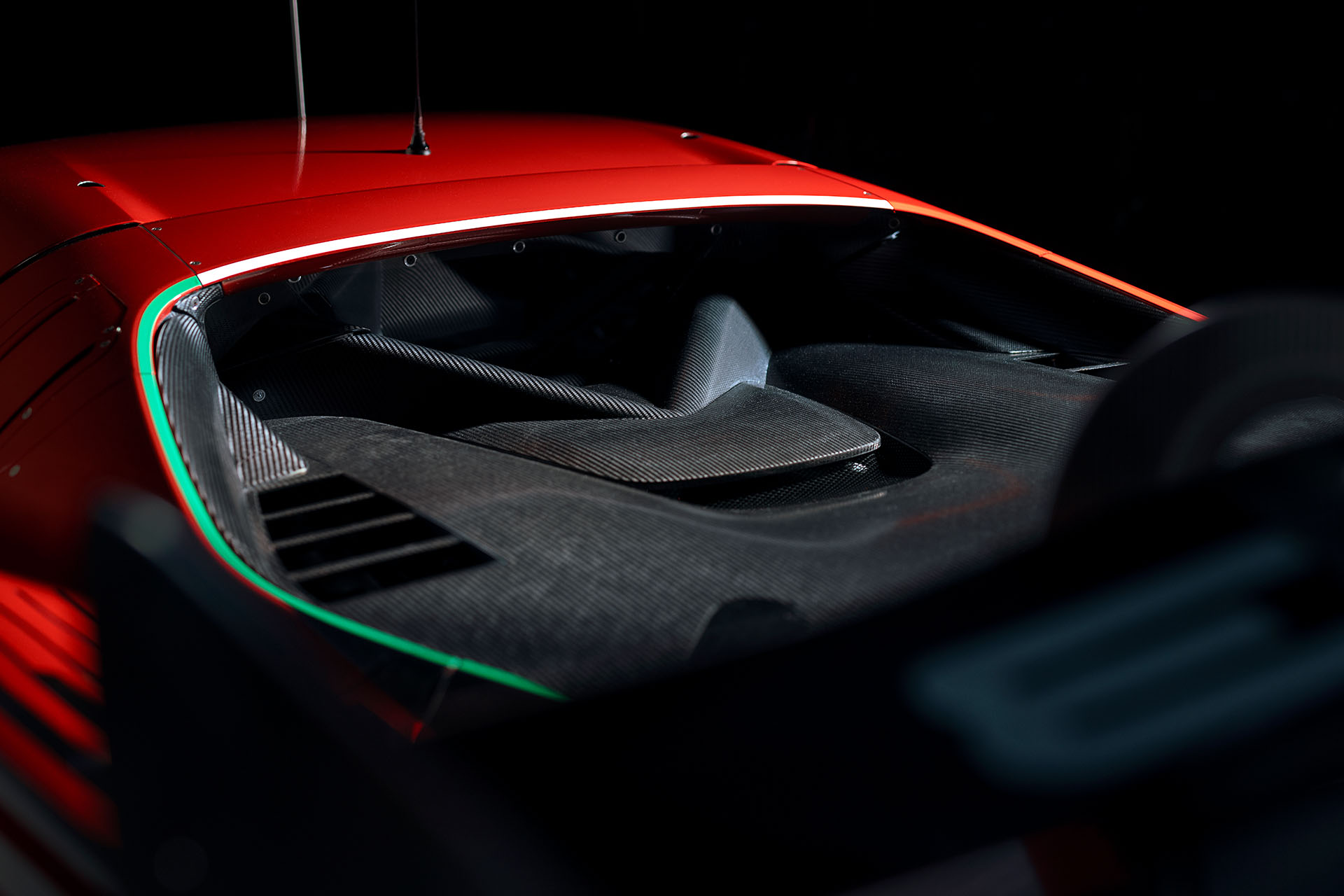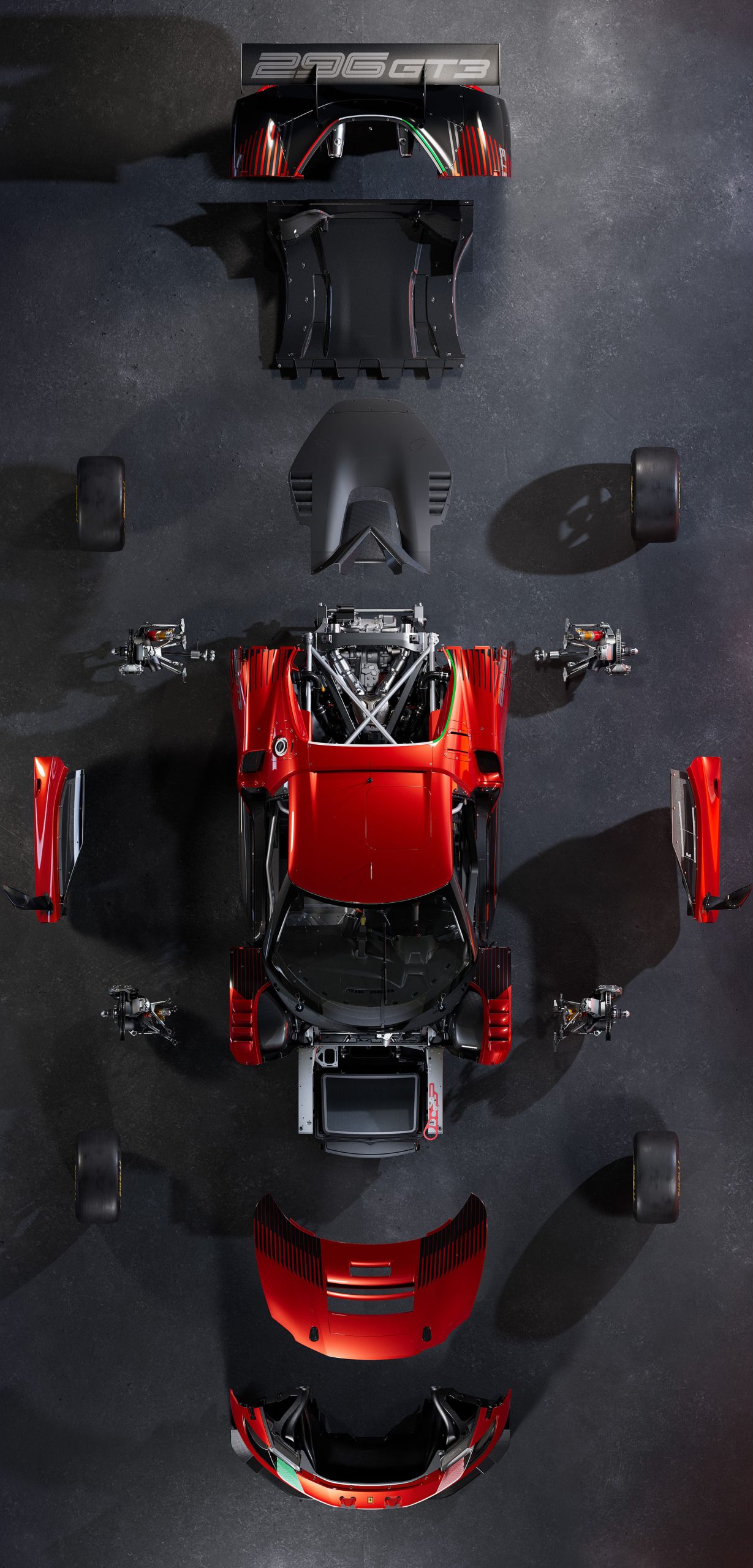We’ve only recently published our article on Maserati entering GT2 racing with their MC20 GT2, and now we receive information about the Ferrari 296 GT3 race car, a successor to the magnificent Ferrari 488 GT3, derived from the brand new Ferrari 296 GTB, the latest model in Maranello’s two-seater mid-rear-engined sports Berlinetta line up, the GT3 derivative will make her debut in the famous 2023 Daytona 24 Hours race next year.
The Ferrari 296 GT3 marks the return of a V6 engine from Ferrari on the track, but to comply with regulations, the GT3 version will not come with the electric motor found in the GTB road car, but the racer will come with the turbos in between the 120° Vee configuration, but compared to the street-legal model, the engine has been lowered and moved forward for the GT3 version for a lower center of gravity and torsional rigidity, about 10% higher compared to the outgoing 488 GT3 EVO.
This engine has been optimized when it comes to firing order, the integrated intake manifolds, and even engine mounts on the sides of the cylinder heads, the result is a lighter, more compact engine setup by eliminating external plenums and supports. Intake efficiency has been, increased thanks to a reduced volume and better internal fluid dynamics, combine this with specific components adopted for the track version of this V6 unit and you’ll get uncompromising performance, reliability, and driveability for both ‘Sprint’ and ‘Endurance’ races.
This redesign was also executed on the gearbox for the 296 GT3, with is completely new and specifically developed for this race car, it is a single-disc clutch with six gears which has been arranged transversely for better aerodynamics and weight distribution, on the 296 GT3 they fitted an electronically actuated clutch controlled from the steering wheel, so there is no clutch pedal in this car. Thanks to the continual pursuit of miniaturization of the components and the use of premium materials, the overall weight of the Xtrac gearbox is still very low, and we all know every single gain in weight reduction increases overall performance.
The 296 GT3 clearly is the future in GT racing for Ferrari, naturally, the exterior of the original 296 GTB has been radically modified to meet the requirements of the track and performance, this restyle was achieved thanks to the teamwork between Centro Stile, aerodynamicists and designers, and if take a look at the car and imagine her without the additional aero parts, you’ll clearly recognize the road car underneath, a perfect combination of simplicity and functionality.
The Ferrari engineers have been able to define an aerodynamic configuration within the homologation performance window by reducing ride height sensitivities with the aim of improving handling and driveability. This precise and detailed work on the shapes yielded a gain of 20% in downforce on the car over the previous generation. From this perspective, the 296 GT3 lives in symbiosis with the air around it, exploiting it to maximize grip and handling, benefiting gentlemen drivers and professionals alike. The challenge met by the designers was to limit the car’s sensitivity to the forces generated by aerodynamics, to provide an extraordinary balance for the benefit of driveability and driver confidence.
The geometry of all the components, from the body to the wing appendages, was designed in detail under varying operating conditions and in mutual aerodynamic interaction to optimize performance and make it robust in different racing contexts, also when in the slipstream of other cars. From the front splitter to the rear extractor, which has a diffusor with a sophisticated three-dimensional design, the 296 GT3 stands out through a refined design that aims to achieve the lowest possible drag.
Behind the wheel on the track, there are a few prerequisites you have to adhere to when creating a new GT3 racer, visibility and accessibility are important, but for a professional race driver it is also required to have a level of intuition, while at the same time keeping the basics like safety and basic comfort in mind, especially in endurance racing where the pilot spends a very long time in the seat during his stint, so for the 296 GT3 the designers at Ferrari completely redesigned the 488 GT3 cockpit using input from actual factory driver and Clienti, the steering wheel took inspiration from the Formula One unit with a plethora of dials and button in immediate reach for the driver, and while the Sabelt seat might be bolted down, drivers can adjust both the pedals and the steering wheel to find a comfortable position, there’s even an air conditioning system in the 296 GT3.
As for the chassis of this new 296 GT3, Ferrari took the vast experience gained from the predecessor, the 488 GT3, and created an entirely new, all-aluminum chassis for the 2023 racer with an integrated safety structure that has been carefully designed by running sophisticated simulations and innovative technologies when it comes to alloys and other materials, do note that the 296 GT3 comes with a longer wheelbase compared to the 296 GTB version, on to the double wishbone arms in the front and rear suspensions, which have been designed to offer maximum grip even at high speeds, limiting stress on the tires as far as possible, to the benefit of tire life, performance, and reliability. The brakes come with newly designed calipers and discs (now 400 mm at the front) while renowned Rotiform developed an all-new, forged wheel homologated specifically for the 296 GT3, this new Rotiform design will be the exclusive wheel offered for all factory Ferrari 296 GT3 professional level racecars.
TECHNICAL SPECIFICATIONS
ENGINE
Type F163CE, 6 cyl. V 120°, 4 valves per cylinder, 2992 cm3, GDI Turbo
Bore/Stroke 88 x 82 mm
Max Power around 600 Hp* at 7250 rpm
Max Torque around 710 Nm* at 5500 rpm
GEARBOX
Transversal sequential gearbox, 6 speed
Rotary e-shift actuator gearshift with paddles on the steering wheel
E-clutch actuator with a paddle on the steering wheel
Magnesium gearbox case with integrated oil catch tank
Pneumatic pre-load adjustable differential
CHASSIS
Tracks: 1726 mm front / 1710 mm rear
Width: 2050 mm max (without mirrors)
Wheelbase: 2660 mm
Weight (no fuel, no driver): 1250 kg
Front and rear suspension: double wishbone, tubular steel suspension arms, aluminum uprights.
5 ways adjustable dampers
Rims: Front 12,5” x 18”, Rear 13” x 18”
Tires: Front 30/68/18, Rear 31/71/18
Brake discs: Front Ø 400×36, Rear 332×32
Brake calipers: Front 6 pistons, Rear 4 pistons
Brake pads: Front 30 mm, Rear 26.5 mm




